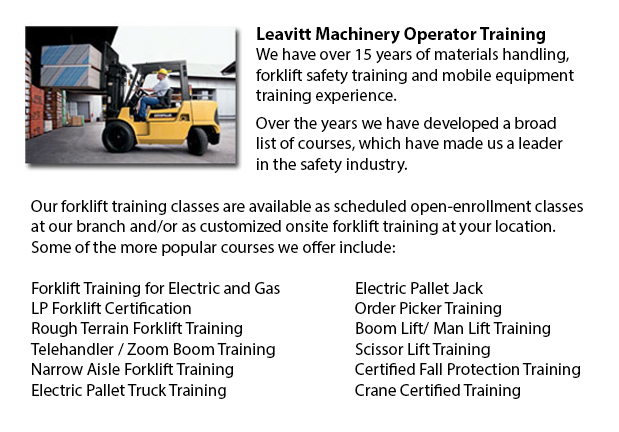
There are in reality two classifications of lift trucks within the manufacturing business, the rough terrain model and the industrial model. Rough terrain lift trucks appeared in the 1940’s designed primarily for use on rough roads, perfect for lumberyards and construction sites, offering hauling muscle when there was no paved surface existing.
Rough ground lift trucks usually employ an internal combustion engine with a battery for power. The engines are able to run on propane, diesel or gasoline. Many manufacturers are experimenting with rough land lift trucks that consume vegetable matter and run from ethanol. Large pneumatic tires with deep treads distinguish these vehicles to permit them to latch onto the roughest ground type without any slippage or sliding.
Some of the first models of rough ground forklifts had the capability to lift in excess of 1000 lbs, by means of forks that could run beneath the item, lift it slightly and move it to an alternate site. After ten years on the market, rough terrain lift trucks were enhanced with supplementary hauling muscle, increasing the possible cargo to more than 2000 lbs. Telescoping booms were added in the 1960’s, permitting them to stack materials much higher than in preceding years. The telescoping model feature is a staple of most all terrain lift trucks these days. Present styles are capable of handling well over 4000 lbs due to the continuous enhancements through the years. Telescoping capability has additionally improved with some models attaining a height of 35 feet. Operator safety has also become a focus with several all terrain lift trucks now designed are fitted with an enclosed cab for the operator, as opposed to the older open air seating capacity.
The rough terrain lift trucks on the market today both run admirably on unpaved roads and paved floors. This style of all terrain forklift is marketed for its’ adaptability allowing the opportunity for firms to utilize one unit to transfer materials from an outside working area into a warehouse.
-
Hyster Forklift
Hyster is an industry leader in the materials handling industry that has been in business for over 80 years. However, it started as a producer of lifting equipment as well as winches. Most of its production was focused in the Pacific Northwest and... More -
Terex Forklift
Terex Forklifts takes immense satisfaction in producing quality equipment that helps enhance their customers' efficiency while standing by their goal to offer a cost effective yet reliable product line. Through numerous divestures and acquisitions de... More -
Scissor Lifts
The scissor lift, often known as a table lift, is an industrial lift that has been tailored for usage within wholesale and retail environments. Industrial lifts have been utilized for decades within the manufacturing and production industries to effe... More -
Aerial Lifts
Aerial jacks are able to accommodate various duties involving high and tricky reaching spaces. Usually utilized to perform routine maintenance in structures with lofty ceilings, trim tree branches, raise heavy shelving units or mend phone lines. A la... More -
Doosan Forklift
Doosan Infracore Company Ltd. is an international and intercontinental organization which includes Defense Industry Products, Industrial Vehicles, Diesel Engines, Automation Systems, Machine Tools and Construction Equipment. In the U.S.A., Doosa... More

Forklift Training Kelowna
TOLL FREE: 1-888-254-6157
Kelowna, British Columbia
forklifttraininginkelowna.com
Email Us
About Us


